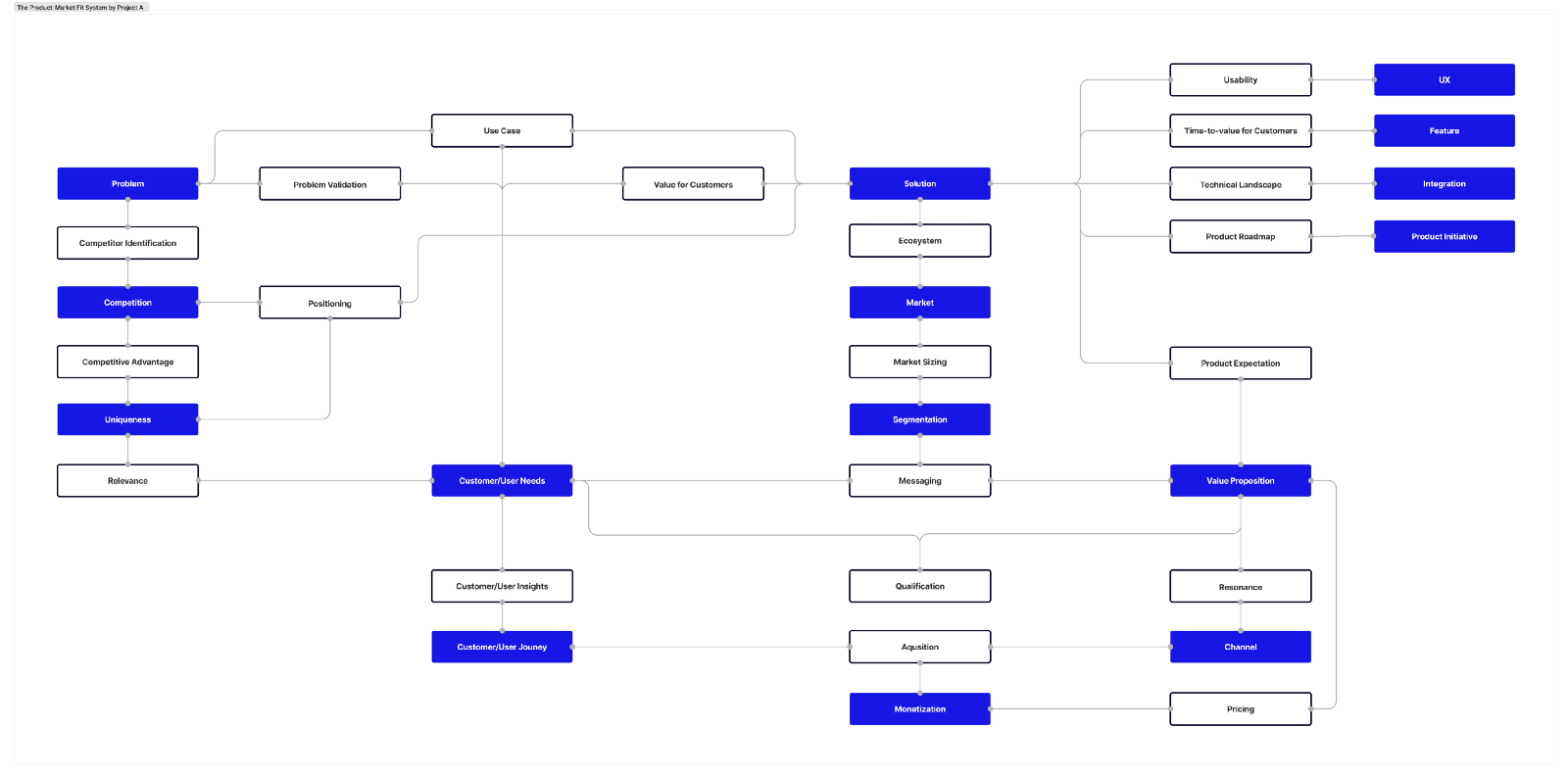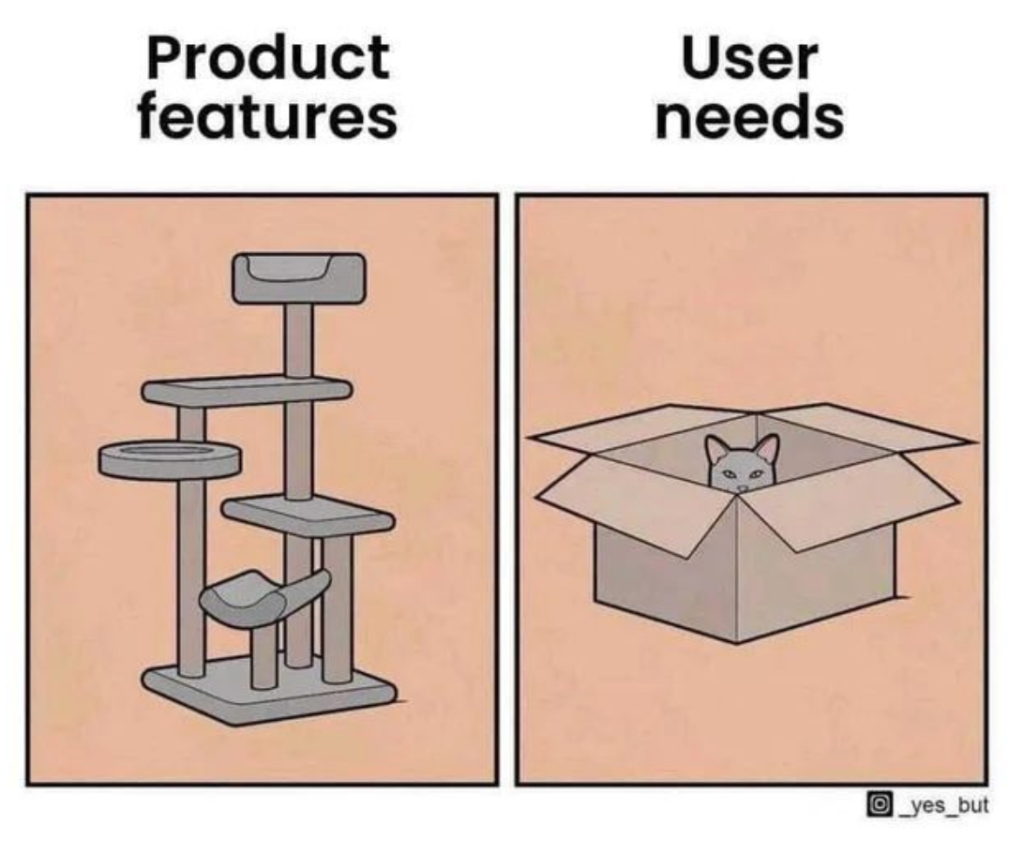By Zihan Wang
Contributing Editors: Ronny Shani, Tamer El-Hawari
In this series on product-market fit, we share our experience and the system we use to deal with this complex challenge that can make or break your company.
Getting product-market fit (PMF) right is hard. You put your heart and soul into a product, and after launching it, you realize no one is interested. Both acquisition and retention are pretty bad, and you have a 2-month runway to turn things around.
But how do you even measure PMF objectively? How do you know you’re making progress? And how can your small founding team deliver when it requires such diverse domain expertise?
As an operational VC, we know how critical the topic is and how little actionable data is available for founders everywhere. So we decided to share our systematic approach to tackling this challenge.
What IS PMF?
Over the last decade, we’ve worked with more than 100 companies in our portfolio, refining ways of systematically and effectively helping startups and established businesses build the right products, find the right audience, and scale their operations.
For us, product-market fit means you have a product that delivers the promised value to an audience who’s ready to pay and reaches them on the right channels.
“Product-market fit means being in a good market with a product that can satisfy that market.”
— Marc Andreessen
When Marc Andreessen popularised the term in the mid-2000s, he referred to early-stage companies starting to do real business from their products.
Our experience has taught us that, especially by this definition,
PMF is relevant for companies across all stages and for as long as they wish to stay competitive. No matter where you are on this spectrum, you can’t afford to stop evaluating and re-evaluating whether your product (still) satisfies the market.
For early-stage startups, this happens once you launch your first product: As real customers haven’t yet validated its value, it’s unclear whose problem you’re trying to solve, and you find yourself struggling with activation and retention. Achieving product-market fit is “the only thing that matters” before your runway ends.
Meanwhile, later-stage companies with initial product-market fit need to re-evaluate their product-market fit position when they
- Launch a new product.
- Approach new customer segments.
- Expand into a new market.
- The macroeconomic circumstances have changed (think video conferencing tools pre- vs post-Covid).
- A technological breakthrough may drive your product obsolete.
Now that we’ve established what product-market fit is and how relevant it is for companies across all stages, it’s time to ask:
- How good or bad is my product-market fit profile?
- What can I do to improve it?
That’s where our Product-Market Fit System comes in to help you get the answers you need.
PMF through system thinking
Paraphrasing Donnella Meadows’ definition, Leyla Acaroglu describes a system as
“A set of related components that work together in a particular environment to perform whatever functions are required to achieve the system’s objective.”
As we are on a mission to bring the benefits of system thinking to (tech) companies, we designed a unique Product-Market Fit System.

The System has three layers.
- The components (blue boxes) represent input about the market, customer, product, etc.
- The synthesis (white boxes) indicates which part of the business might break if two corresponding components fail to work well together.
- The milestones are the crucial outcomes a business needs to reach in order to find PMF. We’ll come to this point later.
Instead of focusing on individual business components, like sales, marketing, or product, we focus on interconnections, making synthesis the most crucial layer for breaking down the complexity of product-market fit.
Essentially, while synthesis shows the problems you should solve, the components connected to it reveal where they come from and what needs fixing.
For example, sometimes, founders find that highlighting how powerful their solution is doesn’t resonate with potential customers. This indicates a disconnection between the Solution and Customer Needs components, and the synthesis we draw is missing Value for Customers. Customers don’t care about how incredible the technology behind your solution is if it doesn’t provide them with some extra value.

Developing the system and testing it with our portfolio companies, we’ve already experienced its value.
It introduces a structure to uncover what’s missing in your product-market fit profile and eliminates guesswork about prioritization. Many founders have told us how valuable it is to have a single overview of essential PMF elements and their relationships instead of reading numerous articles and being left with no action points.
It breaks down the complexity of the quest for product-market fit into achievable milestones. You get closer and closer to PMF as you eliminate the problems demonstrated by the synthesis, reaching milestones (the third layer of the system) such as
- User-problem fit focuses on WHO the business speaks to. It refers to finding your super specific Ideal Customer Profile (ICP) and validating there’s a big enough business opportunity.
- Problem-solution fit focuses on WHAT the business is all about. It refers to a product that truly solves the problem you had in mind. A good indicator for this is to have at least one use case that resonates with a big enough audience.
- Solution-channel fit focuses on the HOW of the business. It refers to owning at least one distribution channel (Viral, Content, Paid, Sales) that generates steady revenue for your product.
product-market fit naturally arrives when you reach these three primary milestones.
In the upcoming article in this series, we’ll go into more detail on how we used our system to help companies find what’s missing in their product-market fit profile.
Interested in getting the Product-Market Fit System with guidelines on generating synthesis? Reach out to us here or via our social channels, and we’ll be in touch.
We are excited to learn more about your quest for PMF! Schedule a 30-minute call with our CPO Tamer El-Hawari and Zihan Wang, author of this article, to discuss PMF and exchange thoughts and approaches.